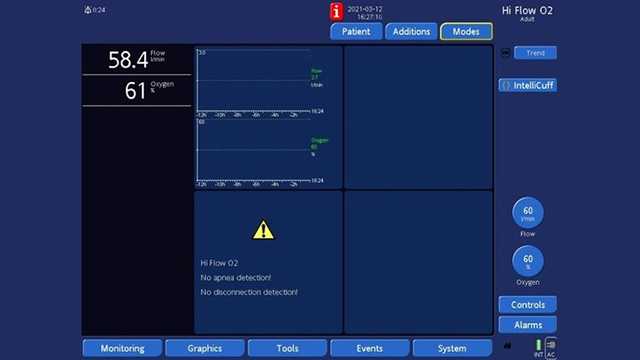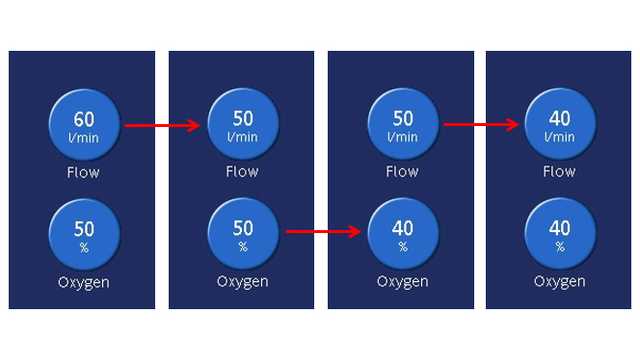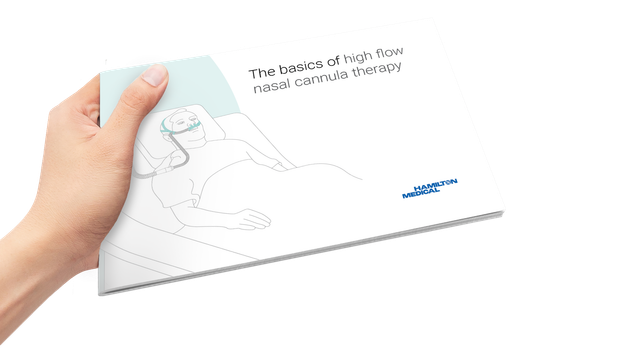
Autor: Aude Garnero, Intensivist, Hôpital Sainte Musse, Toulon, France
Datum: 04.05.2021

Bei diesen Studien lag die Floweinstellung zu Beginn der HFT zwischen 30 l/min und 60 l/min (1-9). Der Sauerstoffwert betrug zwischen 60 % und 100 % bei Therapiebeginn (
Die Temperatur war auf einen Wert zwischen 31 °C und 37 °C eingestellt (2,
1. Wann soll die HFT gestartet werden?
Wenn ein COVID-19-Patient trotz konventioneller Sauerstofftherapie hypoxämisch bleibt, legen Empfehlungen nahe, anstelle der konventionellen Sauerstofftherapie die HFT einzusetzen (
2. Grundeinstellungen:
3. Anpassungen:

4. Wie wird der Patient von der HFT entwöhnt?

Bei einer Sauerstoffzufuhr über 50 % kann die HFT mit der Bauchlage oder CPAP kombiniert werden.

Unser eBook zur Therapie mit High-Flow Nasenkanüle gibt Ihnen einen Überblick über die Funktionsprinzipien und klinischen Vorteile. Ausserdem enthält es praktische Hinweise zur Auswahl des richtigen Patienten-Interface, zum Anpassen der Einstellungen und zur Überwachung der Patienten.